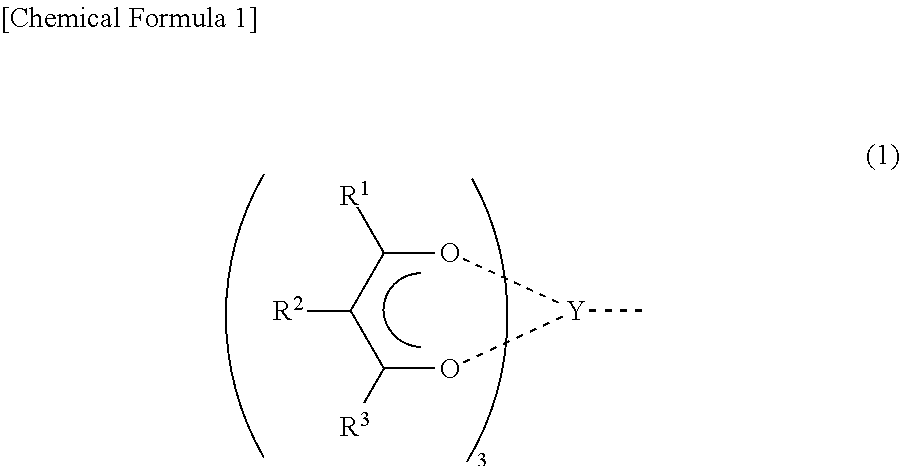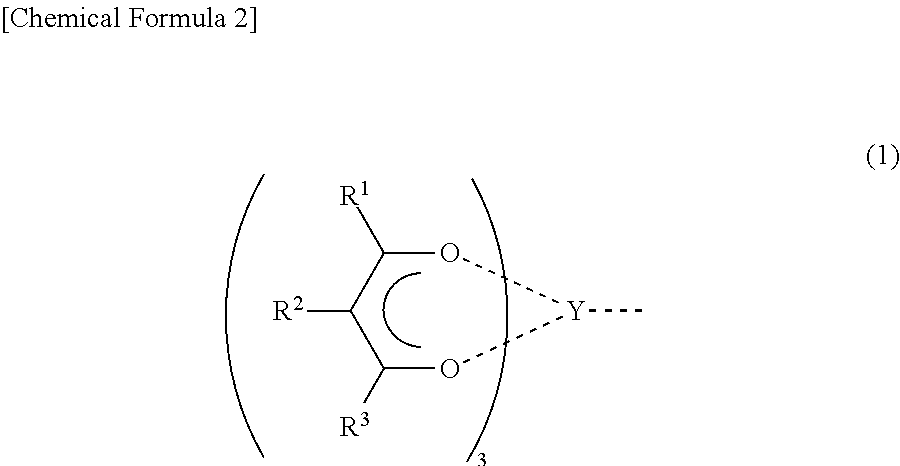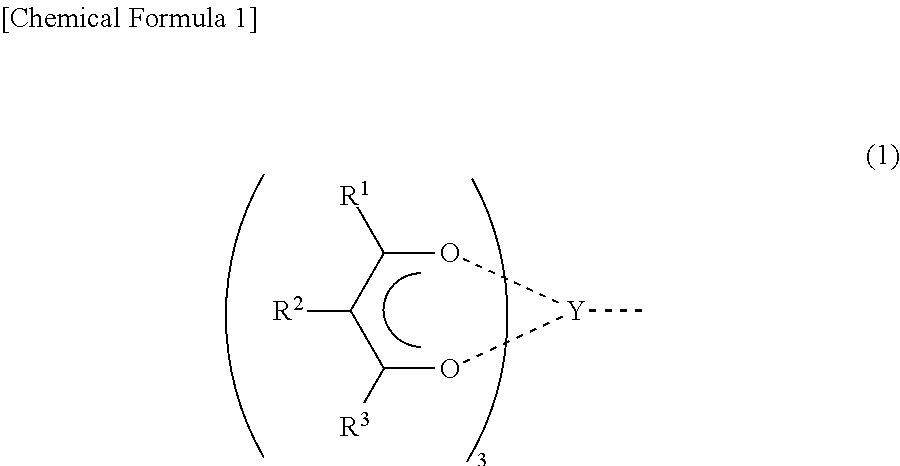Conjugated diene polymer manufacturing method, polybutadiene, and rubber composition utilizing the same
a technology of conjugated diene and polybutadiene, which is applied in the field of conjugated diene polymer manufacturing method, polybutadiene, and rubber composition utilizing the same, can solve the problems of poor silica dispersibility in rubber compositions, difficult to work for some application purposes, and poor mechanical properties, etc., to achieve excellent rubber properties and workability, high degree of branching, and low solution viscosity
- Summary
- Abstract
- Description
- Claims
- Application Information
AI Technical Summary
Benefits of technology
Problems solved by technology
Method used
Image
Examples
example 1
[0086]An autoclave having an internal capacity of 1.5 L was purged with nitrogen, a solution consisting of 390 ml of toluene and 210 ml of butadiene was poured into the autoclave, and the temperature of the solution was set to 30° C. After this, 1.5 ml of a cyclohexane solution including triethyl aluminum (TEA) (2 mol / L) was added, and the resulting solution was stirred for three minutes at 500 rpm. Next, 0.15 ml of a toluene solution including yttrium (III) tris (2,2,6,6-tetramethyl-3,5-heptanedioate) (0.05 mol / L) was added, and the resulting solution was heated to 40° C. Then, the solution was stirred for two minutes. After this, 3.75 ml of a toluene solution including triphenylcarbeniumtetrakis (pentafluorophenyl)borate (0.004 mol / L) was added, and the resulting solution was elevated to 80° C. Then, the solution was polymerized at 80° C. for 15 minutes. After this, 3 ml of an ethanol solution containing an antioxidant was added to stop polymerization. After pressure discharge was...
example 2
[0087]An autoclave having an internal capacity of 1.5 L was purged with nitrogen, a solution consisting of 650 ml of toluene and 350 ml of butadiene was poured into the autoclave, and the temperature of the solution was set to 30° C. After this, 5.63 ml of a cyclohexane solution including triethyl aluminum (TEA) (2 mol / L) was added, and the resulting solution was stirred for three minutes at 500 rpm. Next, 0.25 ml of a toluene solution including yttrium (III) tris (2,2,6,6-tetramethyl-3,5-heptanedioate) (0.05 mol / L) was added, and the resulting solution was heated to 40° C. Then, the solution was stirred for two minutes. After this, 6.25 ml of a toluene solution including triphenylcarbeniumtetrakis (pentafluorophenyl)borate (0.004 mol / L) was added, and the resulting solution was elevated to 80° C. Then, the solution was polymerized at 80° C. for 15 minutes. After this, 10 ml of an ethanol solution containing an antioxidant was added to stop polymerization. After pressure discharge w...
example 3
[0088]Polymerization was promoted under the same conditions as Example 1, except that a cyclohexane solution including triethyl aluminum (TEA) (2 mol / L) was 6.25 ml. The result of polymerization is shown in Table 1.
PUM
| Property | Measurement | Unit |
|---|---|---|
| Temperature | aaaaa | aaaaa |
| Temperature | aaaaa | aaaaa |
| Fraction | aaaaa | aaaaa |
Abstract
Description
Claims
Application Information
 Login to View More
Login to View More - R&D
- Intellectual Property
- Life Sciences
- Materials
- Tech Scout
- Unparalleled Data Quality
- Higher Quality Content
- 60% Fewer Hallucinations
Browse by: Latest US Patents, China's latest patents, Technical Efficacy Thesaurus, Application Domain, Technology Topic, Popular Technical Reports.
© 2025 PatSnap. All rights reserved.Legal|Privacy policy|Modern Slavery Act Transparency Statement|Sitemap|About US| Contact US: help@patsnap.com



